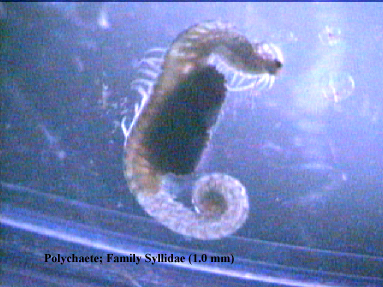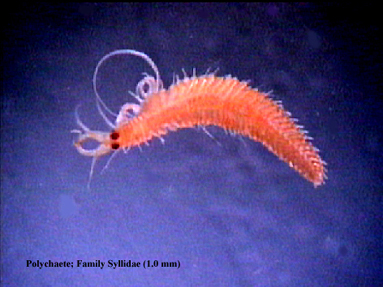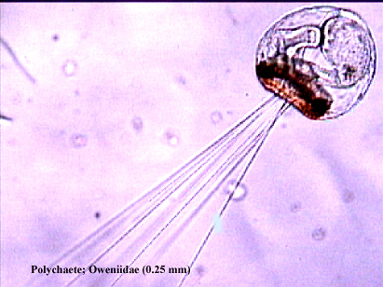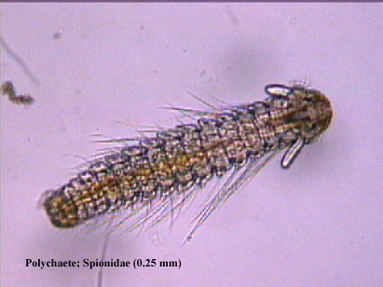

Polychaetes
Polychaete worms are extremely common in both muddy (False Bay) and rocky (Cattle Point) benthic habitats. However, many of these animals also spend at least part of their lives in the plankton, either as larvae, or as spawning (reproductive) adults.
Epitokes are benthic worms, or parts of worms, that swim to the surface and release eggs or sperm. In one family of polychaetes, the syllids, the posterior (rear) portion of the worms is modified to carry either eggs or sperm. This epitoke eventually breaks off from the main part of the worm, and swims to the surface to reproduce. After the eggs are fertilized, female epitokes brood the embryos in sacs on their stomachs until they hatch (see photo on left, below). The remaining benthic worm is called an atoke, and will continue to feed and grow, eventually producing new epitokes. Syllid epitokes have been observed to periodically form immense swarms of reproductive individuals in surface waters. This interesting behavior is thought to be regulated by the lunar cycle, with a peak near the full moon.
Other worm families, such as nereids, have pelagic (free-swimming) representatives that resemble epitokes. However, instead of breaking off the end of benthic worms, the entire individual swims to the surface where the body wall ruptures, filling the water with eggs and sperm. Like syllids, nereid worms often synchronize the release of gametes (eggs and sperm) by swarming together. Presumably this behaviour will maximize the chance that individual eggs will become fertilized.
Pelagic polychaetes and epitokes use parapodia, appendages
that protrude from the body, and peristaltic muscle waves to propel themselves
through the water. Click here to see a movie
of a swimming syllid.
 |
 |
 |
 |